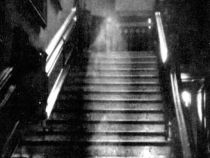After reading Stakeout by Bonnie J. Doerr, I was inspired to design this problem based learning project. New to problem based learning? Key components include:
The following unit could be completed entirely within a
middle school English classroom or science classroom (covering such topics as environmental
science, meteorology, ecosystems, habitats, and biology), or some combination
of the two.
The problem: You
are members of Key Teens Care. Big Pine Key is suffering from a drought. You are worried about the welfare of the animals at National Key Deer Refuge. What will you do?
Part 1
1.
Whole class: Read Stakeout by Bonnie J. Doerr
2.
Whole class: Watch a video on
drought
3.
Pairs: Make a 3 column chart—What we learned from Stakeout that might help us (resources, habitat, animals, process,
etc.)/What we know about drought/What do we need to know about drought and the
ecosystem in Big Pine Key
4.
Whole class: Begin a Learning
Issues Board (a working three column-chart for the class)
5.
Whole class: Prioritize learning issues
6.
Whole class: Select research groups for the top priority questions. Possible topics include:
•
National Key Deer Refuge
•
Ecosystem and habitat of Big Pine Key
•
Drought and water conservation
•
Endangered Species Act
7.
Whole class: Assign interest-
based research groups
Part 2
1.
Whole class: Review Learning Issues Board
2.
Small groups: Conduct research
3.
Whole class: Discuss findings and
update Learning Issues Board
4.
Whole class: Make a list of
possible interview subjects. Possible
list might include:
•
Representative from National Key Deer Refuge
•
Author of Stakeout, Bonnie J.
Doerr
•
Representative from Aransas Project
•
Representative from the Florida Office of Water Policy
•
Representative from Texas Commission on Environmental Quality
•
Representative from Florida Office of Ecosystem Projects
5.
Small groups: Write interview questions while teacher secures interviews
6.
Whole class: Review LIB
7.
Whole class/Small groups: Conduct
interviews via Skype, phone, or email or in person
8.
Whole class: Share and update LIB
9.
Optional: Whole class: Consider possibilities for appropriate field
trips
Part 3
1.
Small groups: Rewrite problem to
more narrowly define it based on your understanding
2.
Whole class: Using small group drafts, create a whole class version of
the new problem
Part 4
1.
Whole class: Review structured problem
2.
Individuals: Brainstorm possible
resolutions
3.
Small groups: Share brainstorms and then decide on the three most
promising. Create a pro/con T-chart to evaluate each one.
4.
Whole class: Share T-charts and
as a class decide which solution is the strongest.
5.
Whole class: Determine who might
benefit from their research and how best to share information with them. Create a plan for this and carry it out.
Part 5
1.
Whole class: Discuss any response
to their findings from their audience
2.
Individual: Evaluate the process,
your role, how you could have done better, how the group could have done
better, etc.
Have you tried
problem based learning? Tell me about
it.
BLOG AUTHOR
Mary Helen Sheriff lives in Richmond, VA with her husband, two children, and two cats. She has an MFA in children’s literature from Hollins University and is an experienced teacher of elementary, middle grade, and college students. Her most recent publishing credits include four middle grade short stories for a reading comprehension website and a YA short story for an anthology written for Ethiopians learning English. She is currently writing a novel and maintaining a blog where you can read her thoughts on writing and education.














